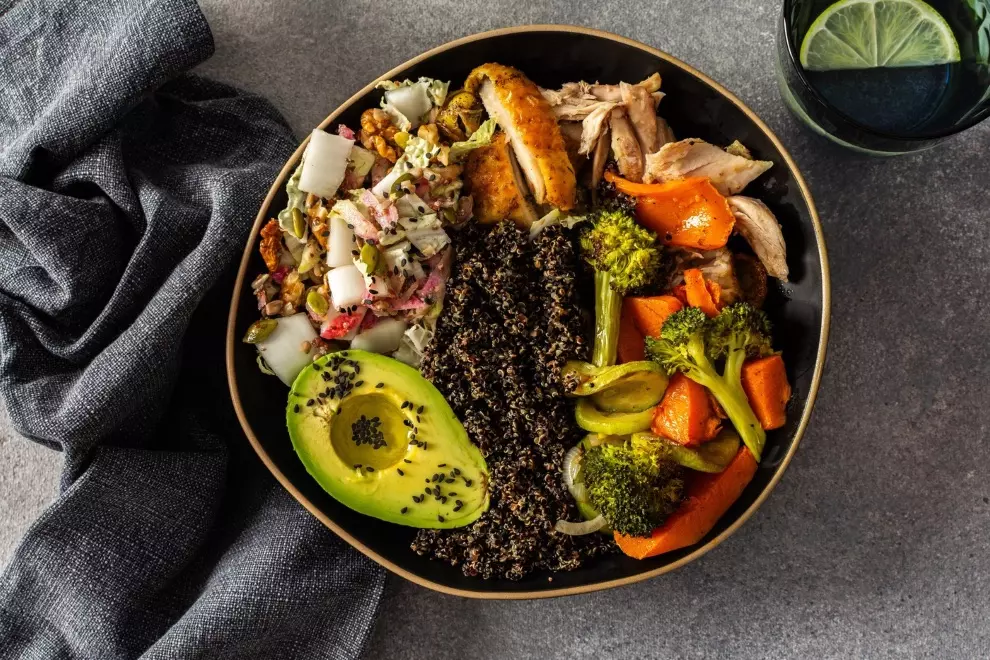Or perhaps you are a cyclist who enjoys pushing their limits on a non-competitive level with others. You compete only with yourself and are more concerned about making healthy choices in your diet and giving your body what it needs post workout to maintain your fitness.
In either case, you’ve heard a lot about protein powder drinks after big rides to help salve tired muscles and recuperate faster. There is an array of different prices and proteins. Which one is best for you and is the difference in price worth the cost? Let’s find out.
Why protein?
Your body needs and uses protein daily, approximately 4 g per pound of body weight per day. More mature athletes require a touch more, about 6 g/pound to maintain the current muscle mass and delay the muscle loss that happens naturally as people age.
Muscle fibres get damaged as athletes push themselves during hard efforts, which results in sore muscles. Muscles use up glycogen stores during exercise, so it’s important to consume carbohydrates post exercise, too. Carbs replenish glycogen stores, while protein is a vital nutrient for muscle repair and growth. The two help you recover faster.
Different proteins
Protein is a chain of 20 amino acids necessary for the function of our organic system. Our bodies naturally make 11 of those 20 amino acids but the other nine, also called “essential amino acids”, can only be gained through the foods we eat. A protein with all 20 is considered “complete”. And inversely, without all 20, it’s labelled “incomplete”.
Whey
Whey is a complete protein and one of the most common forms available today. It is a blend of globular proteins, named after their spherical shape, that are the most abundant in nature. Whey protein is extracted from the clear liquid that forms on top as milk solids coagulate in the cheese-making process. This liquid is called whey, in fact.
Whey is popular because it is readily available and quickly digested by the body. It’s a significant source for people who want to increase their calorie consumption but it won’t leave you feeling satiated for very long. Something to consider if counting calories.
Casein
Casein is 80% of the protein found in all dairy products. The other 20% is its cousin Whey. Casein doesn’t digest as quickly as whey but is a good choice for people who want to feel satiated longer if on a weight loss or control program. It is the protein powder of choice for most bodybuilders (often blended with whey) and is a complete protein, too. Its high percentage value in milk also means it contains loads of calcium and phosphorus, two vital minerals the body needs.
Soy
Soy protein is the only plant-based protein considered complete. It’s made from washed and dehydrated soybeans and is the protein of choice for vegans, vegetarians or people that are lactose intolerant. It isn’t absorbed as quickly as other proteins but it contains minute quantities of fat and zero cholesterol, making it a superb choice for people on a weight loss program or with high cholesterol.
Egg Albumin
Albus is the root of the word Albumin, which simply means white in Latin. Egg Albumin is a concentrated egg-white powder. The whites contain less fat and cholesterol than yolks but who wants to separate them out every time when cooking? Not to mention the wasted yolks. Therefore, conveniently packaged Egg Albumin powder is a popular choice. Egg Albumin is incomplete but blended with soy protein becomes another fantastic alternative to milk-based protein powders.

Mixed plant-based
Soy is the only true plant-based complete protein. In other mixed plant-based products, manufacturers combine proteins from various plant sources to make sure their product contains all 20 amino acids. When blended properly, plant-based protein powders contain a similar amount of protein to other products, about 20-30 g per serving. It is another excellent choice if you are lactose intolerant or follow a plant-based vegan diet.
Expensive vs less expensive
Like most things available for sale, you see similar products sold at very different price points. What’s the difference between them? Do you really need to spend the extra money on the premium product? This same question is asked by consumers considering a purchase in a subject they know little about, such as bicycles, golf clubs, you name it.
The most obvious benefit of buying a less expensive powder is the cost savings! If you are buying it once, okay, no big deal, but over a long period, the difference really adds up. If you are a regular protein-powder user, calculate how much of it you use over a year and see if you can save some money by going with a cheaper brand. But wait.
Could the sticker price be based only on the brand with an excellent marketing scheme or fancy packaging and labels? The idea is to make money, right? More expensive protein powders are typically sold in smaller packaging too. This means you aren’t buying in bulk, which costs you more.
Cheaper options may contain ultra-processed and less expensive raw ingredients, heavy metal contaminants, added sugars, and vague ingredients that serve as a filler or only as a chemical thickening agent. Both of which may pose a health risk. Was the whey (for example) taken from organic milk from grass-fed cows or those in a crowded, industrial setting injected with antibiotics?
The same question applies to plant-based protein powders like soy. Was the crop genetically modified or organically and sustainably grown? All these factors come into play when it comes down to understanding the nutrition label and price tag.
Read the label
Before you choose your next protein powder, read the label and compare its ingredients and nutritional values to other more expensive products you are considering. You may just find a deal. Do they provide the same amount of protein? Is the product made using a complete or incomplete protein? A high-quality product may contain 70-90% protein, while a less expensive option provides only 30-40%.
The less pure protein in the powder, the more added fat, sugar and filler ingredients. Lecithin, locust bean gum, guar gum or carrageenan are some to be avoided. Consumers must weigh the benefits and shortcomings. We all want to save money but not by sacrificing the quality of our health.
Do you need it?
Protein powders are a convenient way to supplement your diet. It’s easy to add a scoop to juice, milk or water or blend it into your favourite smoothie rather than make a complete meal. Use it to hit your daily protein requirements but don’t skip eating whole, natural foods that contain all the protein you need. In most cases, a protein powder drink or shake is not apt as a meal replacement in a balanced diet.
Add whole eggs, almonds and natural nut butters, chicken and turkey breast, cottage cheese, Greek yoghurt, lentils, lean red beef, fatty fish like salmon, pumpkin seeds and wholegrain quinoa to your shopping list. These delicious foods are some of many that are naturally rich in the proteins you need to fulfil your daily protein requirements, save money and recover just as fast.
How much protein you need per day depends on your body size, age and activity level. Research shows athletes gain the most benefit from consuming protein and carbohydrates within 30 minutes immediately following exercise. The convenience of protein powders is obvious but if time is of the essence and you prefer eating whole foods, try preparing your meal before you exercise so it’s ready to be eaten when you return. The choice is yours.




